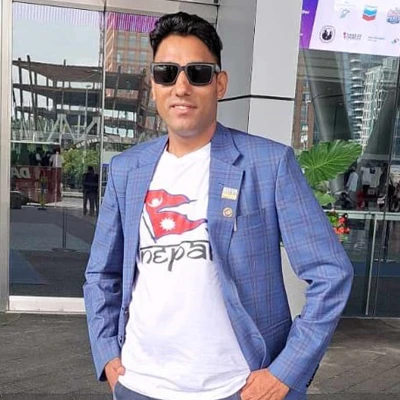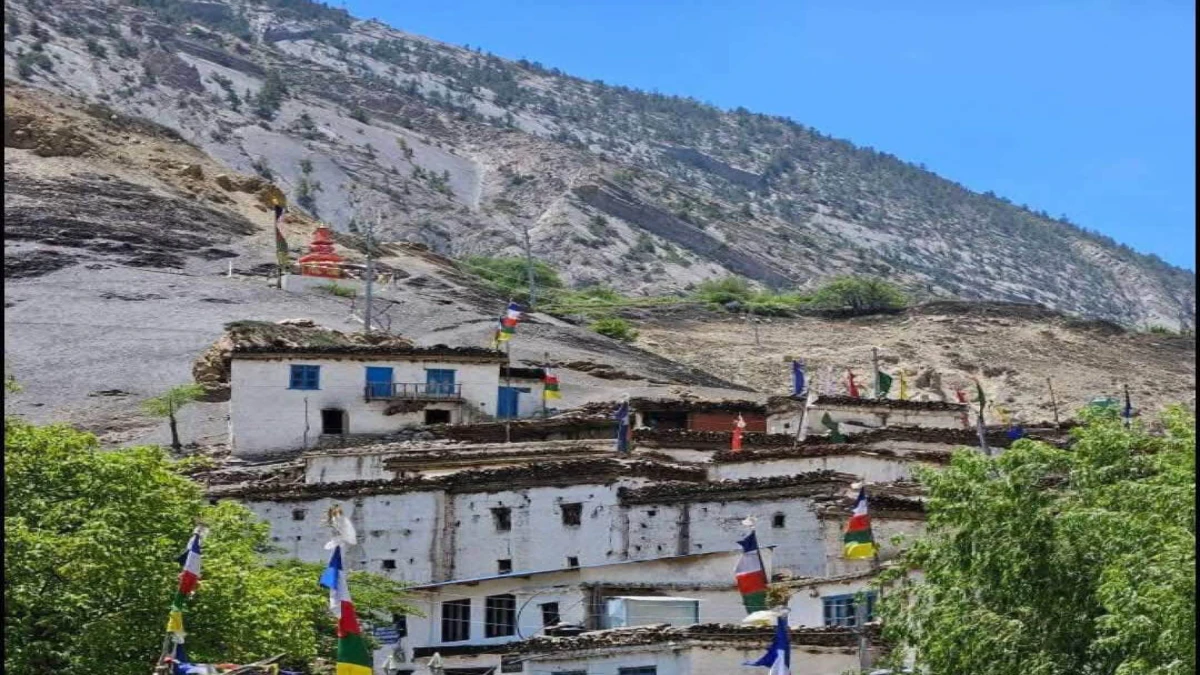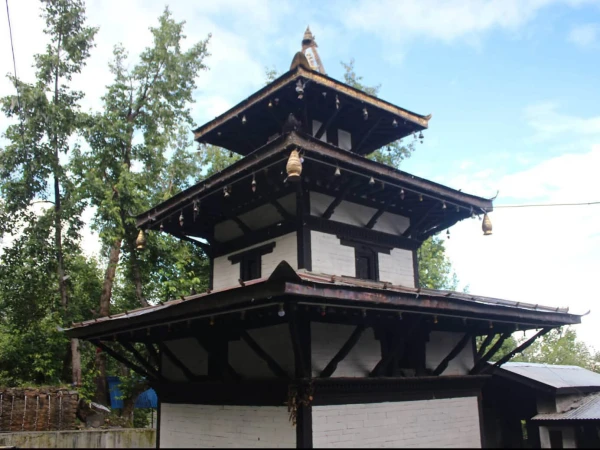Upper Mustang Trek Overview
If you’re a trekker who loves trekking in Nepal and is looking for something different from a normal trek, then Upper Mustang is definitely a destination to consider. Something raw, untouched, and full of mystery. Let me introduce you to Upper Mustang. Upper Mustang trek is not like a typical Nepal’s trek. No greenery, no forest, and no busy trails. It looks like a desert, completely dry everywhere. But Upper Mustang is Full of Culture. It is also called the Last Forbidden Kingdom because it was closed to visitors for many years, just to keep its traditions and scenery safe.
I’m writing this blog to help you explore a unique trek, full of wide canyons, peaceful villages, and ancient monasteries. Trekking to Upper Mustang is a challenging journey but is rewarding too. It shows you a side of Nepal that not many people get to experience. If you are excited to see this untouched land and experience Tibetan culture, this blog will guide you for a trip you won’t forget in life.
Why am I sharing this? Because this place is too wild to keep it to myself. Because I know some of you crave for big skies, peaceful trails, and a place where you can breathe, and feel free. Also, because maybe you’ll read this and know about this hidden gem and feel like going there too. That’s enough for me. That’s why I write.
In this blog, I’ll share everything you need to know about Upper Mustang, all the important details, and helpful tips for your trip.
Why to choose the Upper Mustang trek?
The Upper Mustang trek is something different. If you want to skip the usual green mountain trails like other treks in Nepal, then you should definitely choose this trek. This place is totally dry, just like a desert. Huge canyons are everywhere. Weird-shaped rocks that you won’t see anywhere else. You’ll be trekking between 2,700 and 4,000 meters, that is around 9,000 to 13,000 feet. This is not an easy trek, it’s tough, but if you’re fit, then you’re good to go.
So, the best part of the Upper Mustang trek is that you’ll experience Tibetan culture deeply. Old monasteries that have been there for hundreds of years. Villages where life feels like it hasn’t changed. People are living like they used to a long time ago. And the best part is that it has fewer crowds. Feels like you’ve stepped back in time. Everything is pure, real, and unforgettable.
Best time to go to Upper Mustang Trek
Spring and Autumn are the best seasons for the Upper Mustang Trek. Spring feels special. It’s the time when Mustang wakes up. Apple trees start blooming. Skies are clear. Villages come alive, monks and villagers pass by. You’ll also meet other travellers who want peace too.
During Autumn, the skies are blue, clear, and open. The mountains look sharp and close. No rain to make the trail muddy. No clouds to hide the view. The cliffs look beautiful in golden, red, and brown colours. It is the best time for good photos, since it has clear light and a nice sunset.
Upper Mustang lies in the rain shadow area. So, there is no heavy rain in the Monsoon. While other trekking destinations in Nepal get muddy and wet, Mustang stays dry and open. But other parts of the roads can be tricky. If you want to avoid crowds and see a different side of Mustang, then Monsoon is not a bad idea.
The winter season is less recommended for the Upper Mustang trek. It is very cold in this time, especially at night. Many tea houses get closed. Extreme cold, snowfall, and harsh winds can make your trek difficult. But if you enjoy snow and can handle cold temperatures comfortably, then you can also go during the winter season.
Route of Upper Mustang Trek?
Going to Upper Mustang is not that tricky. First, you need to drive or take a flight from Kathmandu to Pokhara. Again, drive or flight from Pokhara to Jomsom. From Jomsom, you’ll take a jeep to Kagbeni, a village with culture and history. Here, our trek begins. After taking a short rest in Kagbeni, you’ll trek to Chele and then to Syangboche, passing the high mountains Taklam La and Yamada La. You’ll also explore places like Ghar Ghumba. Then you’ll finally reach the walled city of Lo Manthang. On the way back, you’ll pass through Drakmar, Ghiling, and Chhusang. You’ll also visit the sacred Muktinath Temple. The roads and trails are rough, dry, and dusty, but it’s definitely worth it.
Permits required for the Upper Mustang trek
Upper Mustang is classified as a Restricted Area, so all trekkers are required to obtain special permits to enter and travel through the region. The Restricted Area Permit (RAP) is mandatory for every foreign visitor. Previously, this permit cost a fixed USD 500 for 10 days, regardless of the trekking duration. However, the Government of Nepal has recently updated the policy, allowing trekkers to pay USD 50 per day, based on the actual number of trekking days. This new rule offers more flexibility and affordability, especially for travelers planning shorter visits or attending cultural events such as the Tiji Festival in Lo-Manthang.
Restricted Area Permits(RAP)
Upper Mustang is a restricted area near the Tibet border, has a special culture, and is a sensitive zone. Nepal wants to limit visitors to protect its old Tibetan way of life.
Annapurna Conservation Area Permit (ACAP)
Upper Mustang passes through the Annapurna Conservation Area. So, you must pay to help protect the forest, trails, villages, and wildlife there. This money goes for the trail repairs, clean-up, and local projects.
Trekkers Information Management System Card (TIMS)
The TIMS Card is for the safety of the visitors. Helps to rescue if you’re lost.
Foods and Accommodations during the Upper Mustang Trek?
During the Upper Mustang Trek, you’ll get simple but tasty food. Mostly Nepali traditional foods. Dal Bhat and Tarkari (Rice, lentils, and veggies) is the main meal that keeps your energy up. You’ll also find momo, noodles, sandwiches, and sometimes Tibetan bread or soups. Some tea houses even offer simple desserts. The menu is limited, but you’ll love everything available there. The teahouses can also offer basic meal customizations to meet your needs.
Accommodations in Upper Mustang are basic but cozy and comfortable. You’ll stay in teahouses, guesthouses, or lodges. You can also get a luxury hotel in places like Lo Manthang. In other tea houses or lodges, the rooms are simple with wooden beds and blankets. Bathrooms are shared. Hot water is available sometimes for an extra cost. The higher you go, the simpler things get. But the best part is people will treat you like family. Sitting by the fire, listening to the stories of locals, you’ll feel like you are a part of Mustang.
Packing Essentials during Upper Mustang Trek
Before going to the Upper Mustang trek, packing right is necessary. Pack smartly. Think about layers because Nights can be cold. Here’s what you absolutely need to bring for the Upper Mustang Trek:
- Warm Jacket (Down or Fleece) because nights can be freezing cold
- Light shirts and trekking pants for dusty days and trekking
- Hat and sunglasses because the sun is strong during the day
- Gloves, wool socks, and a warm cap for cold nights
- Good trekking boots, not new but comfortable
- Rain jacket or windcheater: weather changes fast here
- Headlamp or flashlight for those dark tea house nights
- Water bottle and purifier for clean water
- Personal medicines and a first aid kit, just for safety.
- Dry shampoo and baby wipes because showers can be rare
- Sunscreen and lip balm because the sun from high altitude is harsh
- Power bank and chargers because teahouses might have limited electricity
- Snacks like nuts, chocolates, or energy bars for the trail.
- Camera or phone with good storage, because the views are next level.
Upper Mustang Trek Cost
Trekking in Upper Mustang costs a bit more that the other treks in Nepal because it is a restricted area. You need a special permit that costs about $500, and you must hire a guide. For a 14 to 16 days trek, you can expect to spend around $2,000-$2,500. This covers permits, guide fees, places to stay, food, and transportation. It might seem pricey, but the beautiful views and unique culture make it totally worth it.
Traditions, Festivals, and religion in Upper Mustang trek
Upper Mustang is a living museum of old Tibetan culture. When you walk through the villages, you’ll the past is still alive. Colourful prayer flags flutter in the wind. Small white chortens sit quietly beside the narrow paths. Every old wall feels like it’s sharing a soft and hidden story.
Most of the people follow Tibetan Buddhism here. You’ll see old monasteries sitting quietly on the hilltops. Monks in deep maroon robes chant soft mantras as the sun comes up. Some people follow Bon too, which is an ancient faith, even older than Buddhism, full of sky spirits and old nature rites.
Then comes the Tiji festival, the biggest festival celebrated in Lo Manthang. It is held every spring, Late May to early June, for three days. Monks wear colourful masks and perform sacred dances that tell the story of defeating evil to protect Mustang from harm. It is the time of celebration, prayer, and enjoyment for everyone. But to witness the Tiji festival, pre-booking must be done.
So, when you trek here, you’ll not just see mountains. You’ll walk through stories, faith, and through the old ways that still breathe.
Altitude sickness during the Upper Mustang Trek
The Upper Mustang trek takes you to 3,800 meters at Lo Manthang. It doesn’t reach extreme altitudes but there’s still a risk of Altitude sickness. The symptoms include headache, dizziness, nausea, loss of appetite, and difficulty sleeping. Don’t ignore these symptoms and take care of it in time. Some preventions of Altitude Sickness are:
- Don’t rush, walk slowly and listen to your body.
- Stay Hydrated
- Avoid Alcohol and smoking
- If you have time, then take a rest day
- Talk to your doctor and carry Diamox
- Don’t ignore the signs like headache, nausea, and fatigue.
Altitude sickness can ruin your trek. So, listen to your body.
Conclusion
The Upper Mustang trek feels like walking through a peaceful old dream. Dry lands, windy cliffs, tiny villages where time moves slow. It’s dusty, rough, and sometimes tiring, but it’s magical too. If you want silence and peace, then Upper Mustang is waiting for you like a secret. If you'd like to know more, check the detailed Upper Mustang Trek package for extra information, itinerary ideas, and what's included.





